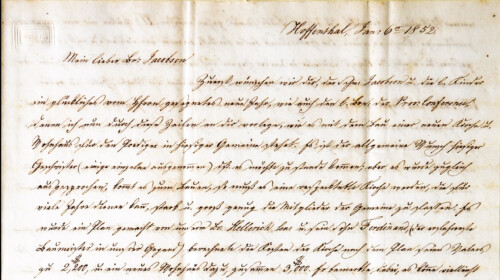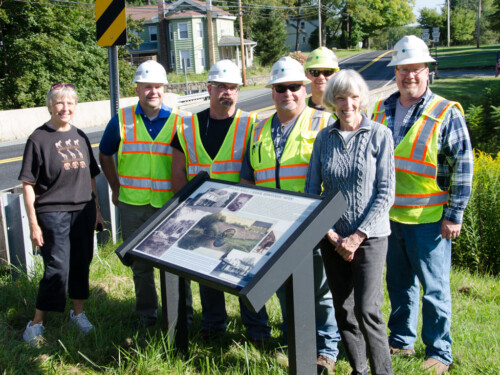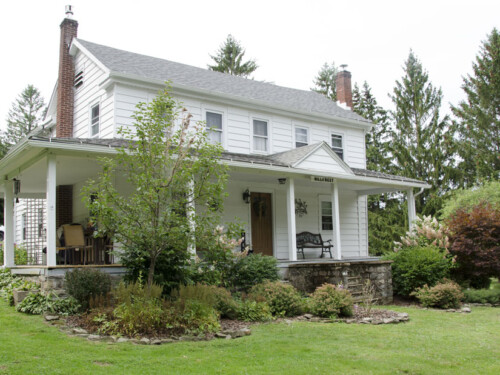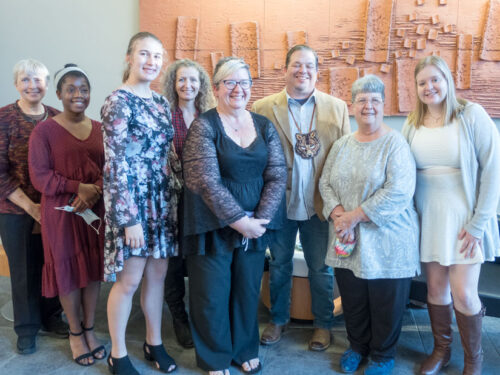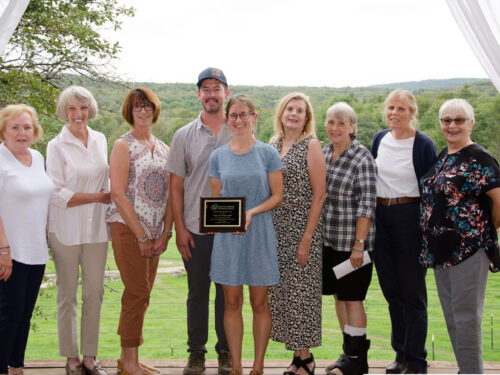A trove of 246 nineteenth-century letters written by pastors of the Hopedale Moravian Church in Newfoundland to their Bishop in Bethlehem are the only known first-person accounts of life in the tiny settlement in its early years. In 2022 GDHS was awarded a Historical & Archival Records Care (HARC) Grant from the Pennsylvania Historical and Museum Commission for the purpose of digitizing the 700 fragile pages of the early letters and translating their contents, thereby preserving the accounts of German immigrants’ struggles to survive in the wilderness and create a thriving community. The two-year project, “Digitization of the Correspondence of Hopedale Moravian Church, 1837-1878,” began last year and will conclude in May 2024.
Historical Importance—When a small group of German immigrants arrived in the Wallenpaupack Valley in the 1820s, the region was a pristine wilderness, as yet undiscovered by the tanners, mill owners and lumber manufacturers who would arrive a decade or two later. The letters shed light on a period in our early history, about which little is known and for which little documentation exists. The letters not only document the challenges of establishing a mission church along Pennsylvania’s northern frontier, they also give insight into the struggles of families to survive hardships such as harsh winters, seasonal floods, unreliable harvests, illness, and internal conflict, all complicated by a lack of agricultural skills and the language barrier between the immigrants and the surrounding English-speaking community.
The pastors were instrumental in guiding the settlers through those early perilous years as they worked together to create a thriving village. The letters describe that journey. They also include membership lists, annual reports and budgets which are helpful in documenting family histories and genealogy.
Because the early Moravian Church advocated an ecumenical religious community, it welcomed members of all faiths. As the first and only church in the lower Wallenpaupack Valley during those early years, its pastors ministered to all who settled there, regardless of religious affiliation.
All of the letters and documents have been scanned by the Moravian Archives in Bethlehem. Most of the letters were written in German Kurrentschrift, a historical form of handwriting that is difficult to read and translate, even for those who are fluent in German. The remaining letters were written in English and are being transcribed. The HARC grant funds will help finalize a project that was begun by the GDHS about ten years ago, with GDHS member Sigrid Wilshinsky’s volunteer translations.
Advances in technology since then has made the digitization of these historic records possible today. After digitization, all correspondence will be made freely and readily available to the public in legible, easy-to-read form. Images of both the original documents and of the translations and transcriptions will be available through the following online databases: PA Power Library, Digital Resources of the Moravian Archives, and the GDHS Digital Archive, which will be linked to the GDHS website.
